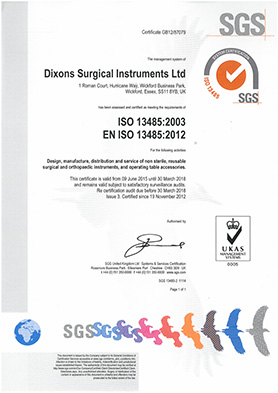
#PROPRESENTER 6 WON'T OPEN ISO#
Although the European Union Directives do not mandate certification to ISO 9001 and/or ISO 13485 the preferred method to prove compliance to such standards is to seek its official certification which is issued by certifying organizations known as "Registrars". One of the major requirements to prove conformity is the implementation of the Quality Management System according ISO 9001 and/or ISO 13485 and ISO 14971. The conformity of Medical Devices and In-vitro Diagnostic Medical Device according to European Union Directives 93/42/EEC, 90/385/EEC and 98/79/EEC must be assessed before sale is permitted.
#PROPRESENTER 6 WON'T OPEN VERIFICATION#
specific requirements for verification of the effectiveness of corrective and preventive actions.specific requirements for documentation and validation of processes for sterile medical devices.specific requirements for inspection and traceability for implantable devices.focus on risk management activities and design control activities during product development.

controls in the work environment to ensure product safety.Food and Drug Administration (FDA), or the Medical Devices Directive 93/42/EEC, required for doing business in the European Union Examples of market-specific regulatory requirements include 21 CFR 820, the Quality System Regulation for medical devices sold in the United States, enforced by the U.S. the promotion and awareness of regulatory requirements as a management responsibility.Additionally, the ISO 9001 requirements regarding customer satisfaction are absent from the medical device standard. A principal difference, however, is that ISO 9001 requires the organization to demonstrate continual improvement, whereas ISO 13485 requires only that the certified organization demonstrate the quality system is effectively implemented and maintained. While it remains a stand-alone document, ISO 13485 is generally harmonized with ISO 9001. The processes required by ISO 13485:2003, which are applicable to the medical device(s), but which are not performed by the organization, are the responsibility of the organization and are accounted for in the organization's quality management system.Though it is tailored to the industry's quality system expectations and regulatory requirements, an organization does not need to be actively manufacturing medical devices or their components to seek certification to this standard, in contrast to the automotive sector's ISO/TS 16949, where only firms with an active request for quotation, or on the bid list, of an International Automotive Task Force supply chain manufacturer can seek registration. If any requirement(s) in Clause 7 of ISO 13485:2003 is(are) not applicable due to the nature of the medical device(s) for which the quality management system is applied, the organization does not need to include such a requirement(s) in its quality management system. It is the responsibility of the organization to ensure that claims of conformity with ISO 13485:2003 reflect exclusion of design and development controls. These regulations can provide alternative arrangements that are to be addressed in the quality management system. If regulatory requirements permit exclusions of design and development controls, this can be used as a justification for their exclusion from the quality management system. Because of these exclusions, organizations whose quality management systems conform to this International Standard cannot claim conformity to ISO 9001 unless their quality management systems conform to all the requirements of ISO 9001.Īll requirements of ISO 13485:2003 are specific to organizations providing medical devices, regardless of the type or size of the organization. As a result, it includes some particular requirements for medical devices and excludes some of the requirements of ISO 9001 that are not appropriate as regulatory requirements.

The primary objective of ISO 13485:2003 is to facilitate harmonized medical device regulatory requirements for quality management systems. ISO 13485:2003 specifies requirements for a quality management system where an organization needs to demonstrate its ability to provide medical devices and related services that consistently meet customer requirements and regulatory requirements applicable to medical devices and related services. Historical SS-EN ISO 13485:2012/AC:2012 Medical devices - Quality management systems - Requirements for regulatory purposes - Technical Corrigendum 1 (ISO 13485/Cor 1:2009 ) (Swedish Standard)


 0 kommentar(er)
0 kommentar(er)
